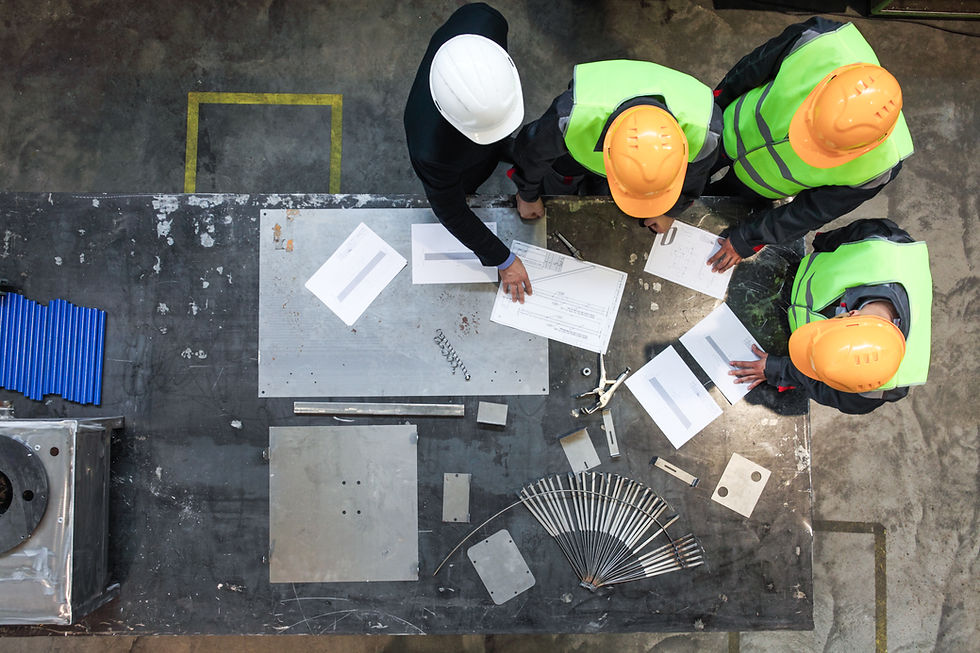Collaboration is essential to the success of your construction business, but what does that really mean? It means more than just getting everyone on the same page.

It means creating an environment where communication can flow freely and easily between all stakeholders, from project managers to owners and subcontractors alike.
It means streamlining access to the right information at the right time so that you’re never wasting time or resources on things you don't need to worry about.
And now in 2022, it means providing a unified platform for your entire team so they can work together seamlessly toward common goals with minimal effort!
Collaboration is essential to the success of your construction business and means more than just getting everyone on the same page

Collaboration is about communication, coordination, information sharing and transparency - it's about having access to project information at any given moment. When collaborating with a large team consisting of several specialty contractors (or even just you and one other person), consistency is essential when it comes time for revisions or changes because all parties will have been working from the same set of plans.
Collaboration is also about accountability. If you're in charge of a project, it's your responsibility to ensure that everyone on your team has the tools necessary to complete their part of the job. Collaborating with other contractors means that you'll need to be willing to do some legwork when it comes time for revisions or changes because all parties may not have the systems or processes in place to coordinate the new details with their teams.

In fact it's no secret that, throughout a project's lifecycle, contractors often find themselves having to manage and distribute thousands of documents and forms, each of which may have several revisions which need to be communicated with the entire project team.

Just distribution is not enough though, as you need to ensure that all parties are actively working off the same set of plans. This is why it's essential to automate and fully digitize your company's document management processes.
Digitizing your document management process into one unified platform alone will save you both financially and administratively - not only does this allow for easier communication between teams within your company but it also reduces administrative overhead involved in maintaining multiple platforms or different software applications across departments like accounting or sales.
Modern companies understand that this is not only a cost-saving measure but also a way to improve efficiency and productivity across the board.
When helping clients, collaboration is necessary for facilitating communication across a wide range of stakeholders.
In today’s world, communication is essential when working with clients. It’s crucial to stay on top of the latest developments in order to ensure that they are well informed and satisfied. The best way to do this is by collaborating with them throughout the entire project lifecycle – from initial concept development through final completion.

If you’re not familiar with the term, the project lifecycle is a series of steps used to plan and manage projects. It consists of six key stages: planning, initiation, execution, monitoring and control, closing, and evaluation.
The project lifecycle is applicable to all projects, no matter their size or complexity. It can be used to create a roadmap for both small and large-scale initiatives and is essential when working with clients because it helps ensure that everyone involved is on the same page and knows what’s expected of them.
The ability to securely store and share project documents and data across disciplines, locations, and stakeholders is essential for maintaining an accurate record of progress and identifying areas for improvement.

In addition, this type of collaboration can offer significant cost savings by eliminating multiple systems or methods of communication (such as email threads and paper-based forms) while also reducing redundancy in workflows or processes that may have been previously handled manually by different teams within larger organizations.
A unified platform is one of the best tools that you can use today to help increase transparency and collaboration. It helps everyone get on the same page and stay there throughout the entire project lifecycle.
In construction, this means that all stakeholders—including owners, general contractors, subcontractors, inspectors and consultants—can easily access all project information in one place. Because it’s integrated into your existing systems and processes, you can be confident that everyone is working with the most up-to-date information at any given time.

Another benefit of using a system like this is that there is no more duplicate data entry. With an integrated solution for managing your projects in the cloud, no one needs to enter information twice or worry about conflicting data from different sources being used by different parties on your team.
Furthermore, everything is accessible from a central location that allows multiple users to work simultaneously. It’s like having one big whiteboard where everyone can see what’s going on at any given point during a complex project or construction cycle.
Give your business the collaborative boost it needs with an integrated construction management system.
Collaboration is a team effort. It is not simply getting everyone on the same page; it's a process that requires communication and commitment from everyone involved. The benefits of collaboration are far-reaching, including:
-
Increased efficiency of construction projects
-
Improved quality control and accountability
-
Reduced costs through shared resources
-
Reduced overhead costs required to maintain workflows
Whether you're looking to improve communication across your business or streamline your workflow, an integrated construction management system can help. It's important not only for managing the project lifecycle but also for enabling collaboration between all stakeholders and giving them access to the right information at any time.






